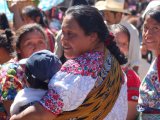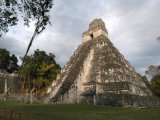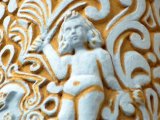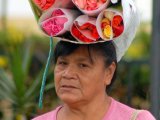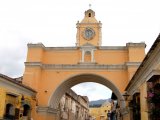Guatemala’s overwhelming culture and legacy can be seen all over the country, from the awe-inspiring Mayan Pyramids of Tikal, the quaint cobblestone streets of Colonial Antigua, the villages of the living Maya culture along the shores of Lake Atitlan, to the ancient rituals and colorful markets of Chichicastenango. This relatively small country offers a feast to the eyes and soul of its travelers, and is certain to charm you as well!
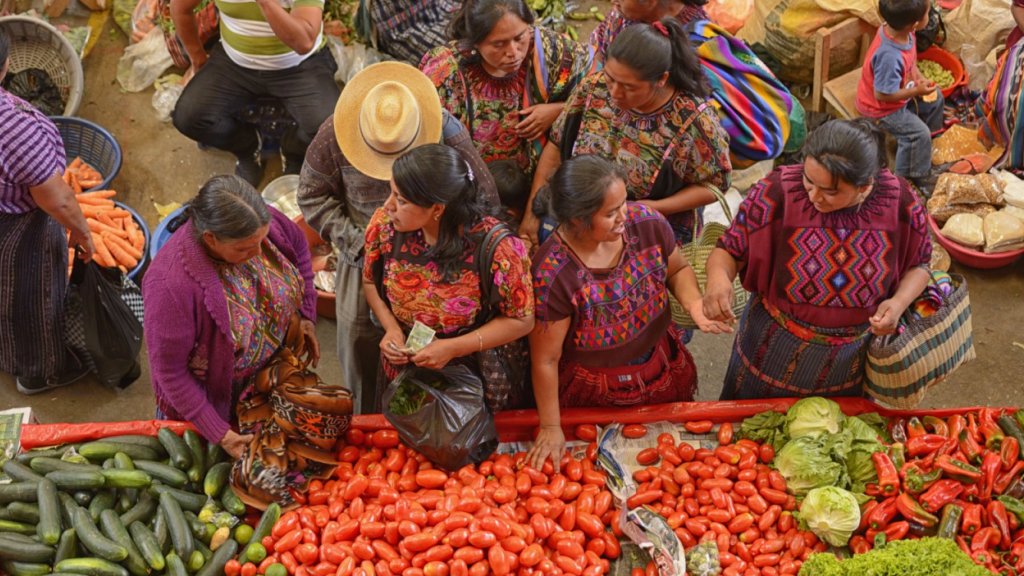
Guatemala
General Information
- Size: Guatemala's 42,000 sq. mi. (about the size of the State of Tennessee or Cuba).
- Population: 13 million, of whom 41% are indigenous descendants of the ancient Maya
- Capital: Guatemala City (alt. 4,872 ft.)
- Language: Spanish 60%, Amerindian languages 40% (23 officially recognized Amerindian languages, including Quiche, Cakchiquel, Kekchi, Mam, Garifuna, and Xinca)
- Electricity: 110 volts, 60 cycles. Outlets take standard U.S. plugs. No voltage converter needed for U.S. appliances.
- Religion: Roman Catholic, Protestant, indigenous Mayan beliefs
- Time: Noon in Guatemala City same as 2:00 p.m. Eastern Standard Time
Currency & Banks:
- Local currency: Guatemalan Quetzal (named after Guatemala’s National Bird).
- Banking hours: Opening times vary, but generally Mon-Fri 9:00 a.m.-7:00 p.m.; Sat 09:00 a.m. to 1:00 p.m.
- Credit cards: American Express and Visa are accepted, whilst Diners Club and MasterCard have more limited acceptance.
- ATMs are common throughout the country.
Shopping:
Guatemala is most famous for its exquisite hand-woven textiles and authentic handicrafts, as well as for its jade and silver jewelry. In the larger cities prices may be fixed but, in countryside markets and stores, haggling for the “best” price is part of the fun. While casual shopping is better and more interesting when souvenirs are bought from street vendors or at the Chichicastenango Market, premium quality textiles and fine arts and crafts are better purchased at the more upscale galleries and studios of Antigua.
Food and Drink:
Similar to its Central American neighbors, the basics of Guatemalan cuisine are black beans, rice, and corn tortilla and the local population has one, or all three, at every meal. Most restaurants and dining places in the country offer a casual atmosphere and almost none of them have a strict dress code. Guatemalan coffee (especially from beans harvested in Antigua) is considered one of the world’s tastiest.
When to Travel?
Most of Guatemala is blessed with “spring-like” weather throughout the year. Weather changes are mostly due to changes in altitude. So while in the highlands of Guatemala the average temperature is a pleasant 22°C (62°F), if you visit the coastal areas or the northeastern regions, you may find some very warm weather with temperatures occasionally peaking as high as 37°C (99°F). The rainy season lasts from May to September and is characterized by brief afternoon thunderstorms followed by beautiful, clear skies.
Travel Highlights
Guatemala City:
Most of the Colonial Section of Guatemala City, the country’s capital, has been destroyed several times by earthquakes; therefore, the city today is a modern and busy metropolis. One example of its modern architecture is the National Theater, built in the shape of an ancient pyramid. Other tourist attractions in the city are the National Museum of History and the Ixchel Museum (Indigenous textiles).
Antigua:
Located in the central highlands, only 45 minutes from Guatemala City, La Antigua Guatemala, or simply Antigua, is one of Latin America’s most beautifully preserved colonial sites. With perfect weather throughout the year and quaint cobblestone streets, this charming city is a paradise for visitors and well worth a 2- or 3-night stay. The city was founded in 1543 by Spain as Guatemala’s first colonial capital and after years of destructive earthquakes, the central administration was moved to its current location: Guatemala City. In 1979, Antigua was declared a “Monument to the Americas” by UNESCO for its fine surviving colonial art and architecture. Antigua is also a world-renowned destination for pilgrims during Easter Week when thousands arrive to participate in the colorful religious processions, famous for the spectacular carpets woven from flowers. Visitors to Antigua can choose from a variety of accommodations ranging from budget hostels to luxury and boutique properties.
Chichicastenango:
Chichicastenango is the home of probably the most colorful and famous Native Market in the Americas. Each Sunday and Thursday (all year round), the market attracts hundreds of the highland Indians and a similar number of tourists. This is the best place to bargain for local Guatemalan handicrafts and textiles. Here you can also see some of the ancient religious ceremonies that are still practiced, a living testimony to the close and sensitive relationship that has developed between the Catholic Church and the ancient indigenous culture. The town’s convenient location makes it a convenient destination for a day trip from Antigua or Lake Atitlan.
Lake Atitlan:
The word “Atitlan” is a Mayan expression that might very well describe the essence of this breathtaking natural treasure. Its closest translation would be: “The place where the rainbow gets its colors”. At a mile above sea level, the lake seems to float in mid-air, anchored to the earth by its three perfectly shaped volcanoes: Atitlan, Toliman, and San Pedro. The lake has been called “the world´s most beautiful lake” by many writers and seasoned travelers. In addition to its unparalleled beauty, Lake Atitlan gives visitors a first-hand glimpse into the Mayan world. A handful of tiny villages along its shores still live by the ancient Maya traditions. The Maya are known to be friendly and welcoming, yet very shy. Atitlan is also a center for adventure tourism, offering travelers activities such as kayaking, swimming, diving, trekking, and fishing. We recommend a 2-night stay in order to fully appreciate the natural beauties and ancient culture, and a 3-night stay if you wish to break the pace of your travel plans and really “smell the flowers” in this earthly paradise.
Tikal:
A mere 1-hour flight from Guatemala City, Tikal takes you back to a different world. The ruins of Ancient Tikal are located deep in the Guatemalan rainforest, a thick carpet of green as far as the eye can see. The site of the Maya ruins at Tikal has been restored over the past 30 years, and was recently selected one of the “New Seven Wonders of the World”. Its towering pyramids and elaborate temples are part of one of the largest archaeological sites and urban centers of the pre-Columbian Maya civilization. The city has been completely mapped and researchers have found that originally it covered an area of more than 16 square kilometers (6.2 sq mi) with some 3000 structures. In 1979 Tikal National Park was declared a UNESCO “World Heritage Site”. A visit to Tikal and the nearby Yaxha ruins requires a minimum stay of 2 full days and 1 night in Flores, although we recommend a 2-night stay for a more relaxed program.
Guatemala Tourist Office Website: www.visitguatemala.com
Suggested Journeys
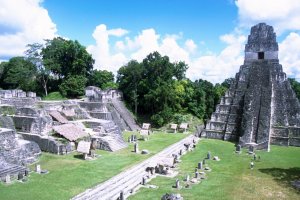 Past & Present Maya culture in Guatemala and Honduras
Past & Present Maya culture in Guatemala and Honduras10 Days / 9 Nights • Suggested Thursday arrivals in San Pedro Sula
Luxury Journey by Private Car & Guide
Featuring: San Pedro Sula, Copán, Antigua, Lake Atitlan, Chichicastenango, Tikal & Guatemala City
